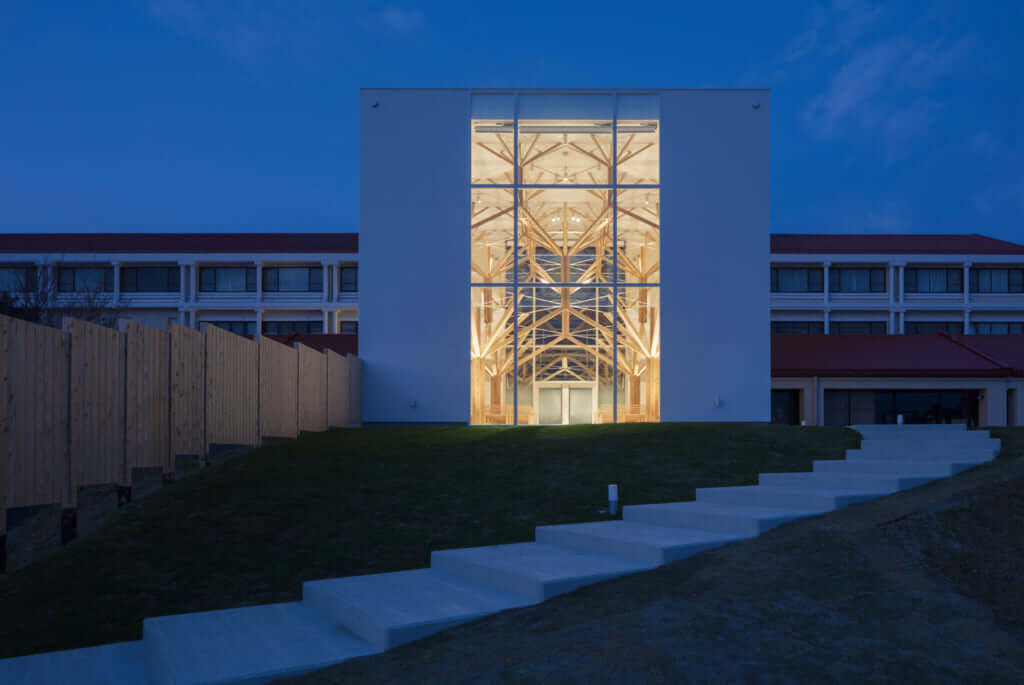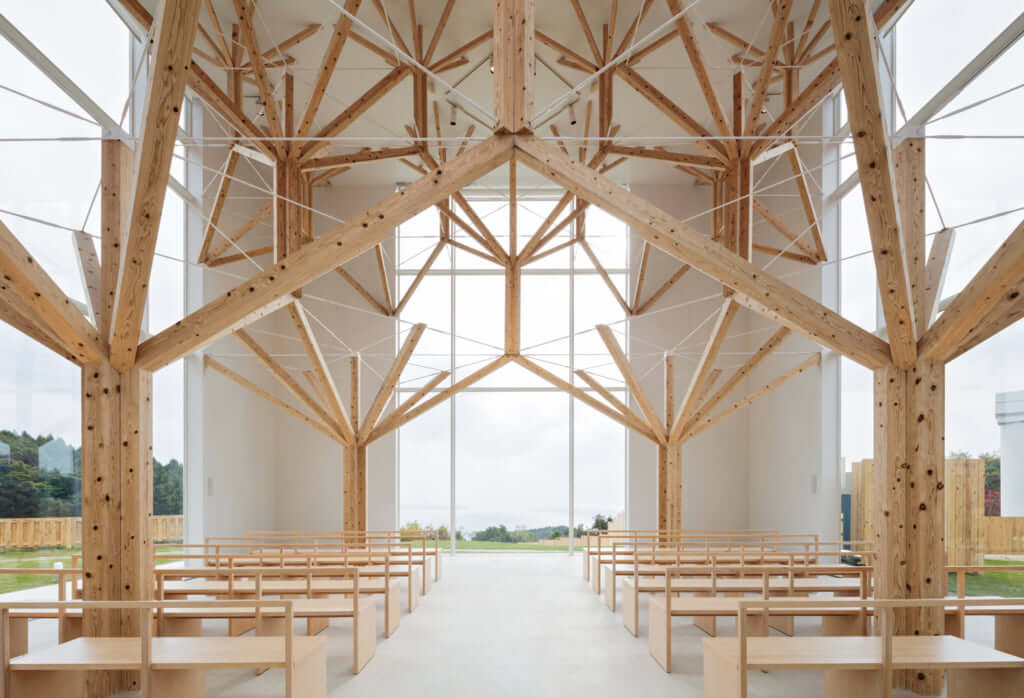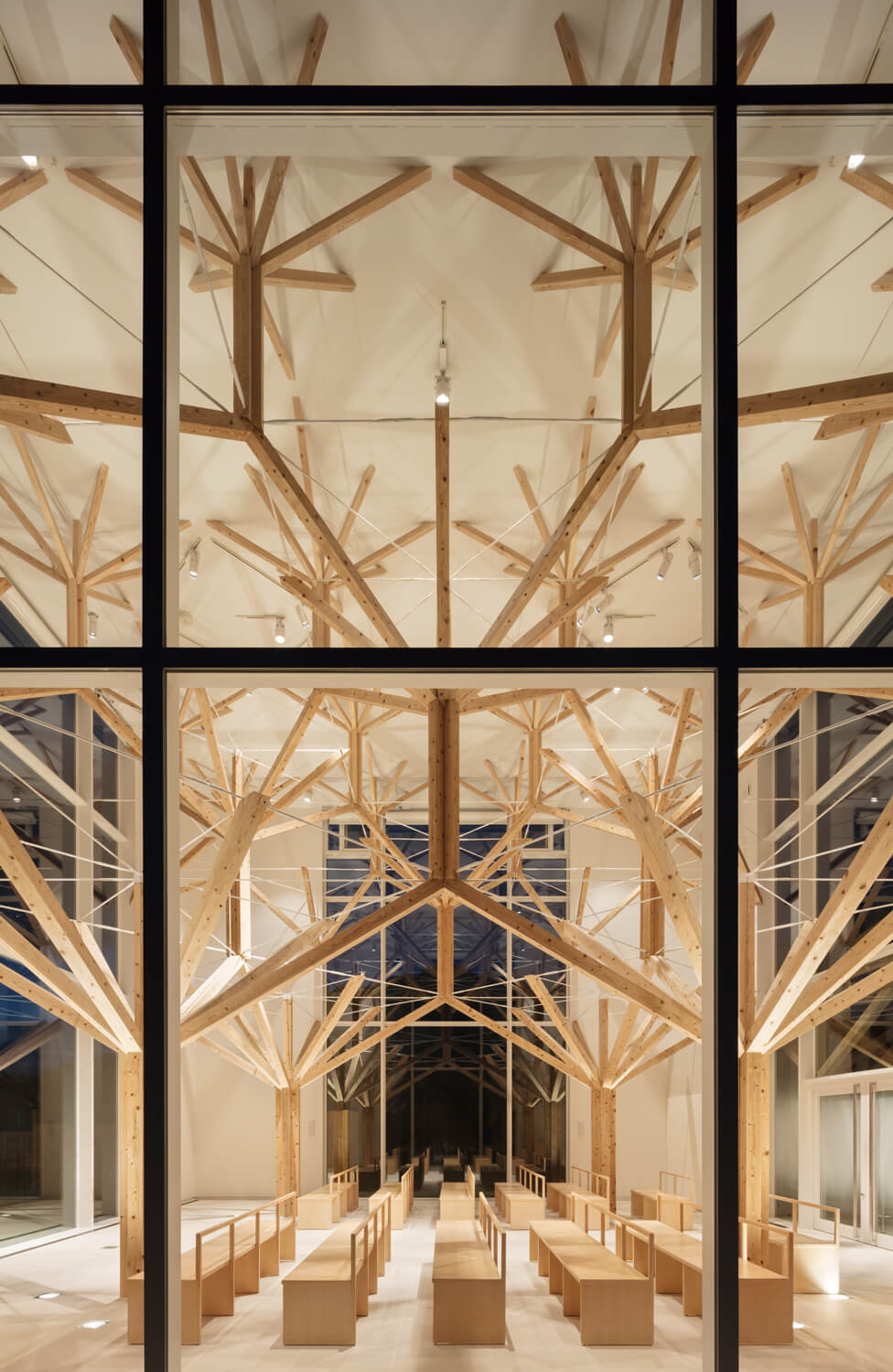A Forest and a Masterpiece of Carpentry Inside a Chapel in Nagasaki
Agri Chapel has no altar and is entirely dedicated to contemplation of the ocean and the surrounding nature.

© Yu Momoeda Architecture Office
Agri Chapel is designed to melt into the landscape that surrounds it. It was built in 2016, in the middle of a nature reserve in Nagasaki prefecture. Observed from a slight distance, its large bay windows offer a glimpse into an immaculate interior with a raw wooden structure that recalls the natural shape of trees.
Its ‘fractal’ branch structure may appear fragile, but it in fact supports more than 25 tonnes, freeing up the floor space entirely.
Woodworking without screws or nails
This ancestral woodworking technique without screws or nails, kanawa tsugi, is renowned for its resistance to the natural disasters that frequently hit Japan. Over the centuries, it has been mainly used to construct Buddhist temples such as the Horyu-ji, dating back to 607, in Nara prefecture.
The architect behind the Agri Chapel, Yu Momoeda, was drawn to this system of joinery for the way in which it could harmonise with nature. The final form of the chapel, which resembles a valut, is a nod to the soaring arches of the neighbouring Oura-Tenshudou, the oldest wooden Gothic church in Japan, built by French missionaries in 1864.
Agri Chapel (2016), an architectural project by Yu Momoeda that can be viewed on his website.

© Yu Momoeda Architecture Office

© Yu Momoeda Architecture Office

© Yu Momoeda Architecture Office
TRENDING
-
A House from the Taisho Era Reveals Its Secrets
While visiting an abandoned building, Hamish Campbell discovered photographs the owner had taken of the place in the 1920s.

-
The Taboo-Breaking Erotica of Toshio Saeki
The master of the 1970s Japanese avant-garde reimagined his most iconic artworks for a limited box set with silkscreen artist Fumie Taniyama.

-
With Meisa Fujishiro, Tokyo's Nudes Stand Tall
In the series 'Sketches of Tokyo', the photographer revisits the genre by bringing it face to face with the capital's architecture.

-
Masahisa Fukase's Family Portraits
In his series ‘Family’, the photographer compiles surprising photos in which he questions death, the inescapable.

-
Hajime Sorayama's Futuristic Eroticism
The illustrator is the pioneer for a form of hyperrealism that combines sensuality and technology and depicts sexualised robots.





